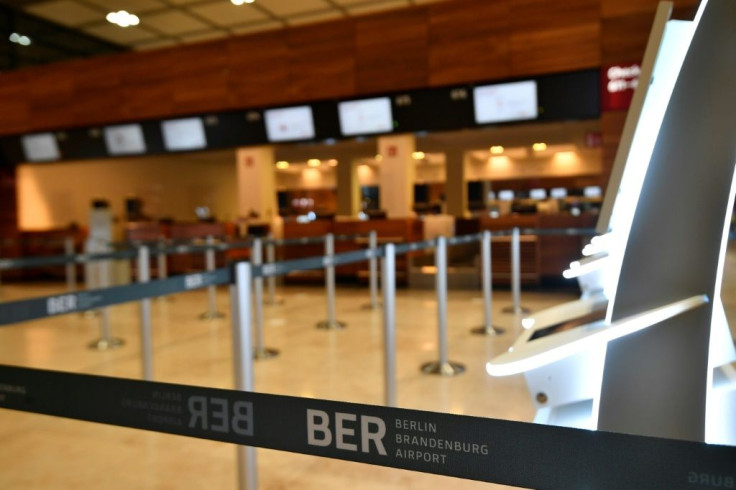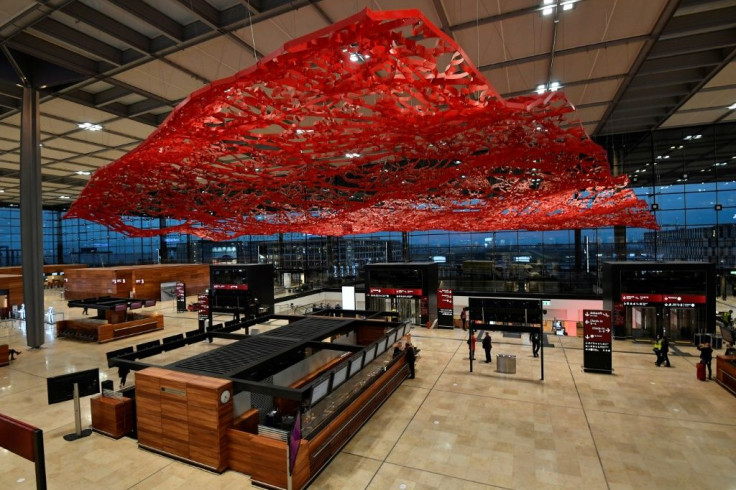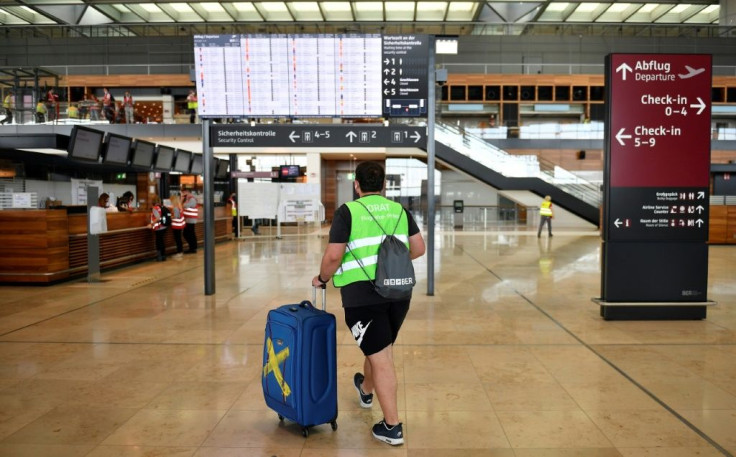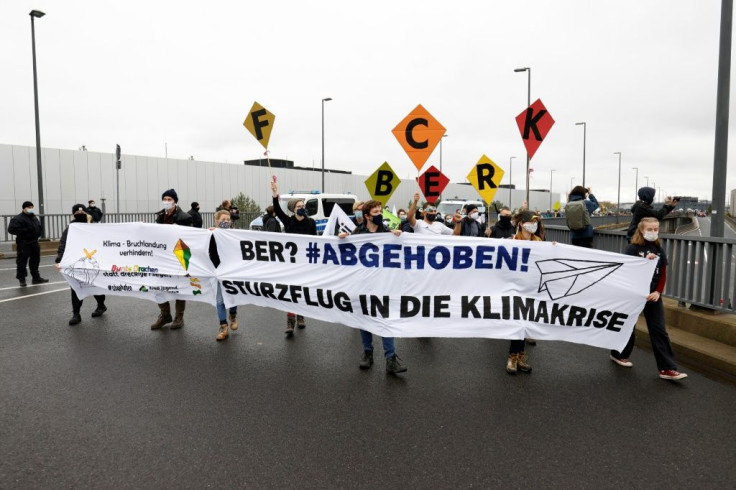Berlin's Much Delayed New Airport Welcomes First Flights
Berlin's new international airport officially opened on Saturday nine years late, massively over-budget and in the middle of a virus-induced air transport crisis.
Two special flights operated by low-cost pioneer EasyJet and German national carrier Lufthansa touched down at Berlin Brandenburg Airport Willy Brandt (BER) around 2:00 pm (1300 GMT) after flying in from nearby Tegel Airport and Munich respectively.

"It's a historic day," Lufthansa chief executive Carsten Spohr told reporters. "I still can't believe it," he had joked before leaving Munich.
Many Germans had almost given up on the airport after years of embarrassing delays, scandals and spiralling costs which saw the project meant to celebrate German reunification turned into a national laughing stock.
Transport Minister Andreas Scheuer said he hoped the opening would mark "the end of jokes on BER."

There was little fanfare given the deep crisis the aviation industry is going through amid the global coronavirus pandemic which has decimated travel demand.

Adding to the muted celebrations, climate demonstrators marched on the building to show their opposition to the new facility.
Some brandished a banner reading "BER?: Take off! A crash flight into the climate crisis."

"Flying represents a huge burden on the climate. We don't need a new big airport," said Ludwig Brautigam of the Extinction Rebellion collective.
The opening is nonetheless a watershed moment for the project, intended as a symbol of German unity and engineering prowess as the country came together after being divided for nearly half a century.
Wood panelling and chrome gave the interior of Terminal 1 a 1990s feel, with the "Magic Carpet", a huge, bright red artwork by American artist Pae White suspended from the ceiling, adding a touch of colour.

Economy Minister Peter Altmaier spoke Friday of his "joy and happiness" at the airport finally being able to open.
"It weighed on all of us that there were no prospects of (the airport) getting up and running for many years," he said. "We are obviously glad that it is now possible."

Construction on the airport designed to replace ageing Tegel and Schoenefeld began in 2006 and it was originally due to open in 2011.
But in 2012, it emerged the fire safety devices weren't working and an inauguration ceremony in the presence of Chancellor Angela Merkel was hastily cancelled.
A faulty lighting system, escalators that ended up being too short, planning errors, construction faults, suspicion of corruption all tarnished Germany's reputation for efficiency.
The airport, Germany's third-largest after Frankfurt and Munich, has been designed to welcome 27 million passengers a year, but in November it will likely see only 20 percent of usual air traffic owing to the pandemic.
Terminal 2 is not to open until spring 2021.
About 15 shops and restaurants out of just over 100 will remain shut, while the rest will keep "limited opening hours" because of low traffic, a spokesman told AFP.
None of this is good news for BER, initially projected to cost 1.7 billion euros ($2 billion) but already beyond the 6.5-billion-euro mark.
The airport, located in the southeast corner of the capital, has been granted 300 million euros in state aid to help safeguard jobs.
But the International Air Transport Association (IATA) does not expect global air traffic to reach pre-crisis levels until 2024.
Engelbert Luetke Daldrup, president of the airport's management company, said Saturday he hoped to make a profit by around 2025.
"We will see to what extent the coronavirus allows us to do that."
The first passenger plane to take off from BER is slated to be an EasyJet flight to London Gatwick, departing at 6:45 am on November 1.
Tegel, beloved by many Berliners for its unconventional hexagonal design and ease of access, is to welcome its final flight on November 8.





















